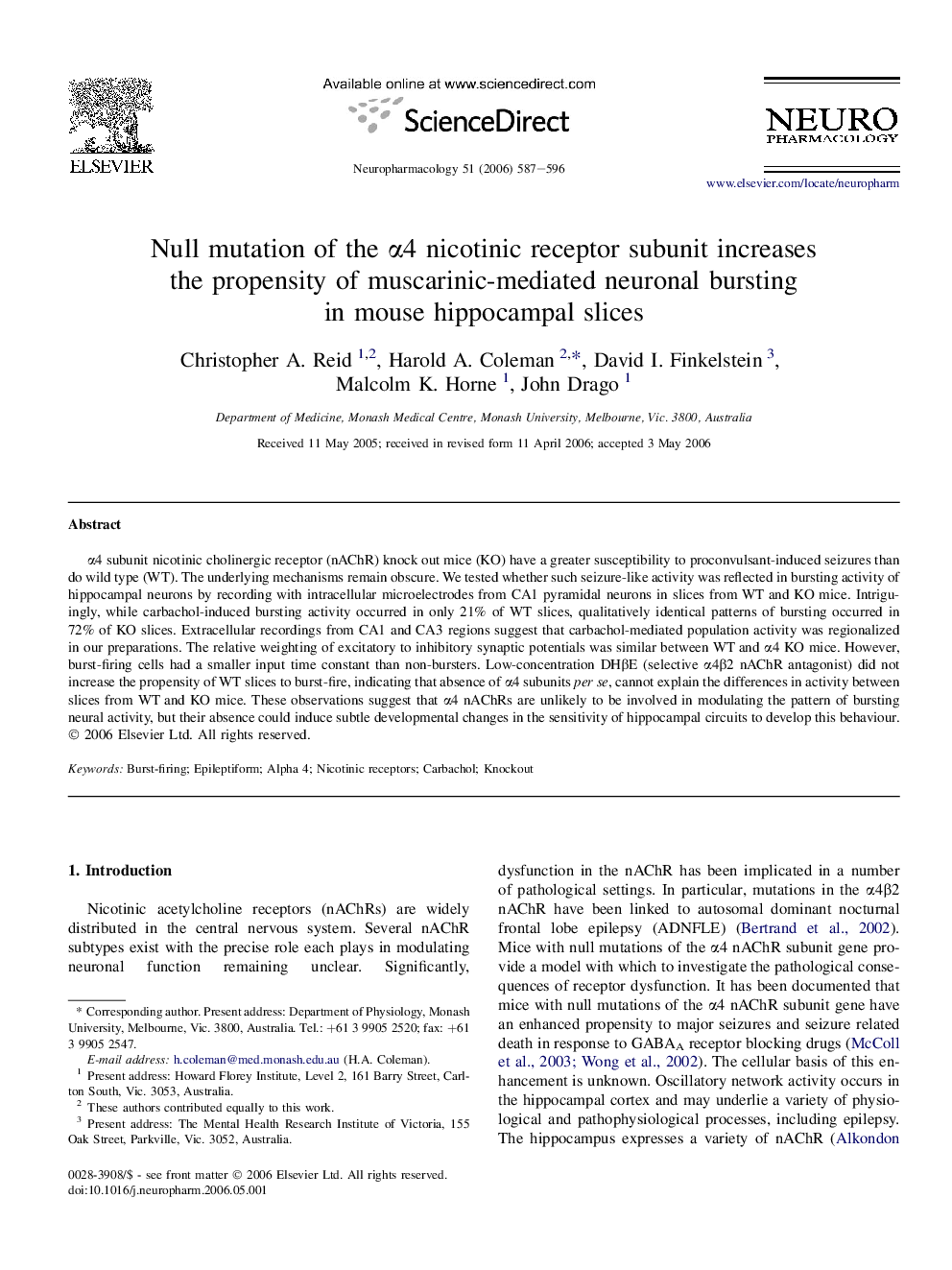| Article ID | Journal | Published Year | Pages | File Type |
|---|---|---|---|---|
| 2495363 | Neuropharmacology | 2006 | 10 Pages |
α4 subunit nicotinic cholinergic receptor (nAChR) knock out mice (KO) have a greater susceptibility to proconvulsant-induced seizures than do wild type (WT). The underlying mechanisms remain obscure. We tested whether such seizure-like activity was reflected in bursting activity of hippocampal neurons by recording with intracellular microelectrodes from CA1 pyramidal neurons in slices from WT and KO mice. Intriguingly, while carbachol-induced bursting activity occurred in only 21% of WT slices, qualitatively identical patterns of bursting occurred in 72% of KO slices. Extracellular recordings from CA1 and CA3 regions suggest that carbachol-mediated population activity was regionalized in our preparations. The relative weighting of excitatory to inhibitory synaptic potentials was similar between WT and α4 KO mice. However, burst-firing cells had a smaller input time constant than non-bursters. Low-concentration DHβE (selective α4β2 nAChR antagonist) did not increase the propensity of WT slices to burst-fire, indicating that absence of α4 subunits per se, cannot explain the differences in activity between slices from WT and KO mice. These observations suggest that α4 nAChRs are unlikely to be involved in modulating the pattern of bursting neural activity, but their absence could induce subtle developmental changes in the sensitivity of hippocampal circuits to develop this behaviour.
